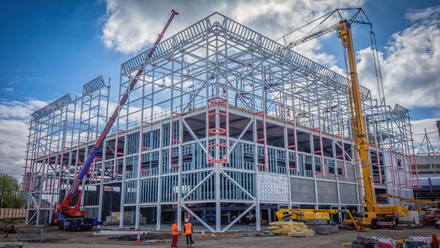Fire Chiefs warn of systemic building safety flaws hindering remediation
The NFCC said relying on fire and rescue services to enforce a broken regime is unsustainable. Launching its Remediation Position Statement on 16 October, NFCC urged ministers to establish a centrally coordinated programme to tackle compliance, funding, accountability, and workforce shortages, stressing that anything less will leave critical safety gaps unaddressed.
NFCC welcomed the intent of the government's Remediation Acceleration Plan, which aims to complete remediation of all high-rise buildings by 2029, and medium-rise buildings by 2031. However, major barriers remain. Recent government estimates of affected buildings have fluctuated between 5,900 and 12,000, with nearly two-thirds of the 5,554 buildings in the public remediation portfolio still incomplete.
Funding is fragmented and inconsistent. Current schemes often cover only cladding, which NFCC says is leaving other serious defects unaddressed.
Depending on the final number of buildings within scope, NFCC estimates it would cost between £29.86 million to £61.77 million, with a current working estimate of £46.11 million to inspect all buildings that may require remedial work. This comes at a time when many services face real-terms budget cuts.
Skilled staff are in short supply, with fewer than 30 fully competent fire engineers in English fire and rescue services. These roles take years to train, and capacity has been further reduced by staff moving to the private sector.
The wider construction sector is also under strain, with a shortfall of 250,000 workers according to CIOB and rising demand for new homes and infrastructure.
NFCC Chair, Phil Garrigan, said:
The Grenfell Tower fire was a national tragedy that exposed fundamental flaws in how we design, build, manage and regulate our homes. Fire and rescue services have played a vital role in making buildings safer, but enforcement alone cannot fix a broken system.
Eight years on, progress is not where it should be. We must tackle the root causes – fragmented oversight, weak regulation, and chronic gaps in workforce, funding and data. Fire risk must be embedded into every stage of building safety, not left to emergency response.
Underpinning all of this must be tougher regulation. The Grenfell Tower fire showed us, in the most devastating way, what happens when building regulations are too weak to protect people. We cannot allow that lesson to be ignored. The Government must implement the Grenfell Tower Inquiry recommendations in full and strengthen regulation to ensure no community is ever put at such risk again.






